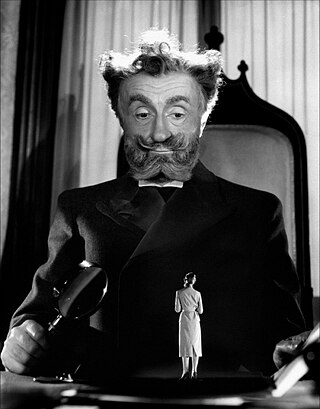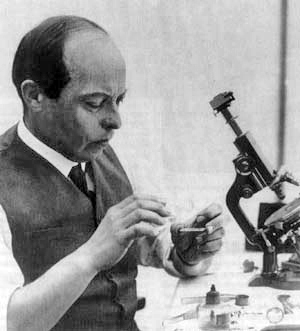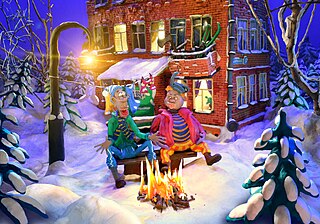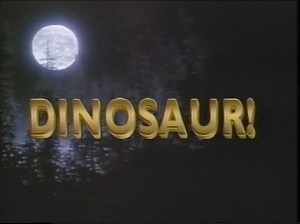Related Research Articles

Animation is the method that encompasses myriad filmmaking techniques, by which still images are manipulated to create moving images. In traditional animation, images are drawn or painted by hand on transparent celluloid sheets (cels) to be photographed and exhibited on film. Animation has been recognized as an artistic medium, specifically within the entertainment industry. Many animations are computer animations made with computer-generated imagery (CGI). Stop motion animation, in particular claymation, has continued to exist alongside these other forms.

Stop motion is an animated filmmaking technique in which objects are physically manipulated in small increments between individually photographed frames so that they will appear to exhibit independent motion or change when the series of frames is played back. Any kind of object can thus be animated, but puppets with movable joints or plasticine figures are most commonly used. Puppets, models or clay figures built around an armature are used in model animation. Stop motion with live actors is often referred to as pixilation. Stop motion of flat materials such as paper, fabrics or photographs is usually called cutout animation.

Special effects are illusions or visual tricks used in the theatre, film, television, video game, amusement park and simulator industries to simulate the imagined events in a story or virtual world.

Motion blur is the apparent streaking of moving objects in a photograph or a sequence of frames, such as a film or animation. It results when the image being recorded changes during the recording of a single exposure, due to rapid movement or long exposure.
Visual effects is the process by which imagery is created or manipulated outside the context of a live-action shot in filmmaking and video production. The integration of live-action footage and other live-action footage or CGI elements to create realistic imagery is called VFX.

Ladislas Starevich was a Polish-Russian stop-motion animator notable as the author of the first puppet-animated film The Beautiful Leukanida (1912). He also used dead insects and other animals as protagonists of his films. Following the Russian Revolution, Starevich settled in France.

Claymation or clay animation, sometimes plasticine animation, is one of many forms of stop-motion animation. Each animated piece, either character or background, is "deformable"—made of a malleable substance, usually plasticine clay.

Traditional animation is an animation technique in which each frame is drawn by hand. The technique was the dominant form of animation in cinema until the end of the 20th century, when there was a shift to computer animation in the industry, specifically 3D computer animation.

Dragonslayer is a 1981 American dark fantasy film directed by Matthew Robbins from a screenplay he co-wrote with Hal Barwood. It stars Peter MacNicol, Ralph Richardson, John Hallam, and Caitlin Clarke. It was a co-production between Paramount Pictures and Walt Disney Productions, where Paramount handled North American distribution and Disney's Buena Vista International handled international distribution. The story is set in a fictional medieval kingdom where a young wizard encounters challenges as he hunts a dragon, Vermithrax Pejorative.

Dinosaur is a 2000 American live-action animated adventure film produced by Walt Disney Feature Animation, The Secret Lab, and released by Walt Disney Pictures. The 39th Disney animated feature film, the film was directed by Ralph Zondag and Eric Leighton. It features the voices of D.B. Sweeney, Alfre Woodard, Ossie Davis, Max Casella, Hayden Panettiere, Samuel E. Wright, Julianna Margulies, Peter Siragusa, Joan Plowright, and Della Reese. The story follows a young Iguanodon who was adopted and raised by a family of lemurs on a tropical island. After surviving a devastating meteor shower, the family moves out for their new home and befriends a herd of dinosaurs along the way while on a journey to the "Nesting Grounds". However, they face harsh circumstances with its Darwinistic leader while being hunted down by numerous predators, such as Carnotaurus.

Time-lapse photography is a technique in which the frequency at which film frames are captured is much lower than the frequency used to view the sequence. When played at normal speed, time appears to be moving faster and thus lapsing. For example, an image of a scene may be captured at 1 frame per second but then played back at 30 frames per second; the result is an apparent 30 times speed increase. Similarly, film can also be played at a much lower rate than at which it was captured, which slows down an otherwise fast action, as in slow motion or high-speed photography.

Dennis Muren, A.S.C is an American film visual effects artist and supervisor. He has worked on the films of George Lucas, Steven Spielberg, and James Cameron, among others, and has won nine Oscars in total: eight for Best Visual Effects and a Technical Achievement Academy Award. The Visual Effects Society has called him "a perpetual student, teacher, innovator, and mentor."

The Enforcement Droid Series 209, or ED-209, is a fictional heavily armed robot that appears in the RoboCop franchise. It serves as a foil for RoboCop, as well as a source of comic relief due to its lack of intelligence and tendency towards clumsy malfunctions.
James Danforth is an American stop-motion animator, known for model-animation, matte painting, and for his work on When Dinosaurs Ruled the Earth (1970), a theme-sequel to Ray Harryhausen's One Million Years B.C. (1967). He later went on to work with Ray Harryhausen on the film Clash of the Titans (1981) to mainly do the animation of the winged horse Pegasus.

Phil Tippett is an American movie director and Oscar and Emmy Award-winning visual effects supervisor and producer, who specializes in creature design, stop-motion and computerized character animation. Over his career, he has assisted ILM and DreamWorks, and in 1984 formed his own company, Tippett Studio.
Tippett Studio is an American visual effects company specializing in computer-generated imagery (CGI) for films and television commercials. The studio has created visual effects and animations on over fifty feature films and commercials, garnering an Academy Award, four Clio Awards and two Emmy Awards. The company currently consists of approximately 150 employees, with offices located in Berkeley, California.

Image stabilization (IS) is a family of techniques that reduce blurring associated with the motion of a camera or other imaging device during exposure.

Dinosaur! is a 1985 American television documentary film about dinosaurs. It was first broadcast in the United States on November 5, 1985, on CBS. Directed by Robert Guenette and written by Steven Paul Mark, Dinosaur! was hosted by the American actor Christopher Reeve, who some years before had played the leading role of Superman.

Prehistoric Beast is a ten-minute-long experimental animated feature film conceived, supervised and directed by Phil Tippett in 1984. This sequence is the first film produced by the Tippett Studio, founded by Tippett. Made with the go motion animation technique, scenes from Prehistoric Beast were included in the 1985 full-length documentary Dinosaur!, first aired on CBS in the United States on November 5, 1985.
The Empire Strikes Back is a 1980 American epic space opera film directed by Irvin Kershner, with a screenplay by Leigh Brackett and Lawrence Kasdan, based on a story by George Lucas. It is the sequel to Star Wars (1977), the second film in the Star Wars film series, and the fifth chronological chapter of the Skywalker Saga. Set three years after the events of Star Wars, its story follows the battle between the Galactic Empire led by Emperor Palpatine and the Rebel Alliance led by Princess Leia. Meanwhile, Luke Skywalker trains to master the Force so he can confront the Sith lord Darth Vader. The ensemble cast includes Mark Hamill, Harrison Ford, Carrie Fisher, Billy Dee Williams, Anthony Daniels, David Prowse, Kenny Baker, Peter Mayhew, and Frank Oz.
References
- ↑ Sawicki 2010, p. 122.
- ↑ Smith 1986, p. 90.
- 1 2 Smith 1986, pp. 91–95.
- ↑ "Phil Tippett's Prehistoric Beast" – via www.youtube.com.
- ↑ Harry Walton talks about working at ILM, and stop motion animating the Harpy sequence from Young Sherlock Holmes, in this deleted scene from Sense of Scale
- ↑ "Phil Tippett - Articles". www.angelfire.com.
- ↑ Smith 1986, p. 96.
Works cited
- Smith, Thomas G. (1986). Industrial Light & Magic: The Art of Special Effects. New York: Ballantine Books. ISBN 0-345-32263-0.
- Sawicki, Mark (2010). Animating with Stop Motion Pro. Focal Press. ISBN 978-0-240-81219-9.